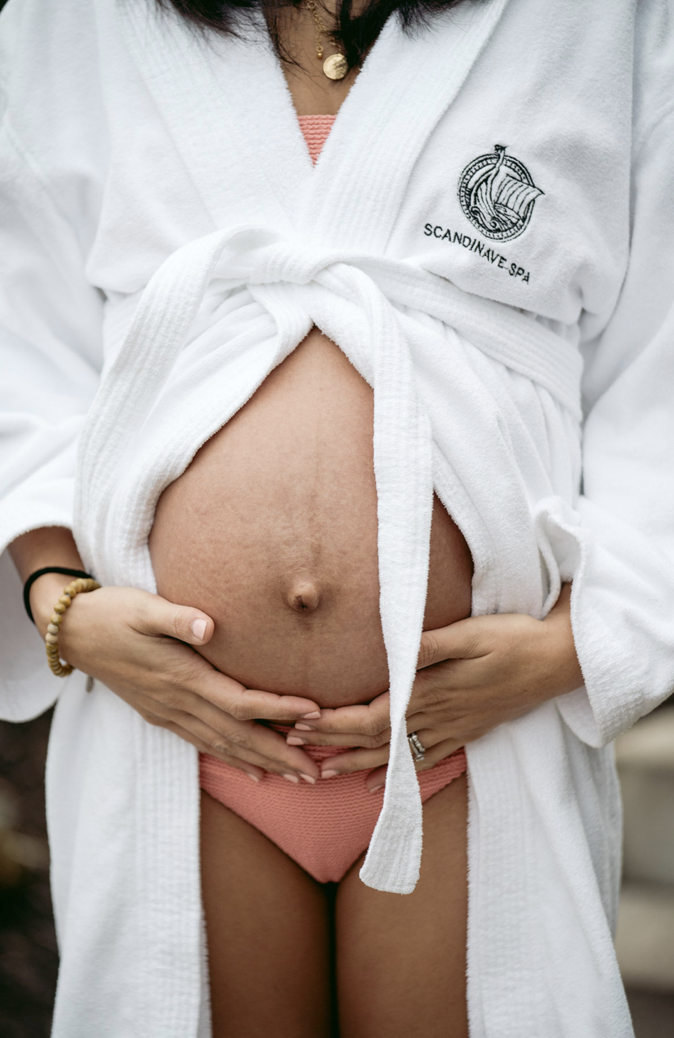
What is Diastasis Recti Abdominis?
This is the separation of the rectus abdominis – the outermost layer of your abdominal wall. As your belly expands during pregnancy to accommodate the growing baby, the muscles and connective tissue including the linea alba stretch and expand too.
DRA is normal and common. It’s shown that every pregnant person will have some degree of separation at the end of their pregnancy.
Do you have DRA?
During pregnancy – you can assess for DRA visually and using touch. Visually – you’re looking for any ‘bulging’, ‘coning’ or ‘doming’ down your midsection between your abdominal muscles. If you touch at, above and below your belly button, you could also feel the separation of your rectus abdominal muscles.
In the postpartum period – you can assess for DRA similarly – looking for ‘coning’, ‘doming’ or ‘bulging’. To feel – lay on your back, tuck your chin and do a small crunch – you can then feel at, above and below your belly button to see if there is any separation. If you do feel something – that’s OK, the majority of people still have some separation up to 8 weeks postpartum and as many as 1 in 3 still have mild separation one year after birth.
When assessing yourself – it’s best not to obsess or stress about what you find &/or see – always check in with a pelvic floor physiotherapist or someone who can help you understand how to manage your pregnancy and postpartum journey. A health professional will not only just look at/ feel the gap in your abdominal wall. They are considering a few other factors too.
Such as:
Width at, above and below belly button
Depth at, above and below belly button
Tension across the linea alba – can you create tension and are you able to hold it
Whole abdominal function + pelvic floor function + control
Can you still work out?
The answer is YES (always consult your Doctor before starting an exercise program). Working alongside a health and/or fitness professional who understands pregnancy and postpartum will help you stay active and strong. And it will likely get you back to doing all of the things that you loved to do prior to pregnancy!
There are a few things that we teach you that may be different compared to a regular fitness class or trainer. This includes:
- All about intra-abdominal tension and how to manage it. Another perk of this can also be learning how not to leak urine with sneezing or coughing 😉
- Breathing and bracing – how to apply different levels of abdominal tension to different tasks.
- How to scale your workouts effectively to ensure that you minimize ‘bulging’, ‘coning’ and ‘doming’ during your workouts and day-to-day life
- Pelvic girdle, SI joint and low back pain – how this correlates to DRA and how you can use exercise to manage this
Diastasis is normal and not scary. Learning to engage and use your whole abdomen, core and body is important for all facets of life. Instead of avoiding exercise (or pushing yourself too hard!), please work with someone who can help you understand your body and needs for pregnancy and postpartum.

